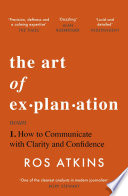

Clarity is the cornerstone of effective communication. In 'The Art of Explanation,' the author emphasizes that explanations must be clear to be effective. This means avoiding jargon and complex language that can alienate your audience. Instead, the focus should be on simplicity and directness. The author suggests that clarity can be achieved by understanding your audience's perspective, needs, and prior knowledge. By tailoring your message to what your audience can grasp, you ensure that your explanation resonates with them. This principle applies across various fields, from education to business, where clear communication can enhance understanding and foster collaboration. The book provides practical techniques for achieving clarity, such as using analogies, visuals, and storytelling techniques that can make complex ideas more relatable.
Continue readingA key takeaway from the book is the necessity of knowing your audience. This involves understanding their background, knowledge level, and interests. The author posits that effective explanations are not one-size-fits-all; they must be tailored to the audience's specific context. By conducting audience analysis, you can identify what your audience already knows and what they need to learn. This understanding allows you to craft explanations that bridge the gap between existing knowledge and new information. The author also discusses the importance of feedback in this process. Engaging your audience through questions and discussions can provide insights into their comprehension levels, enabling you to adjust your explanations in real-time.
Continue readingStorytelling is a powerful tool for explanation, as highlighted in the book. The author argues that narratives can make complex information more digestible and memorable. By framing your explanations within a story, you create an emotional connection with your audience, which enhances engagement and retention. Stories help illustrate points in a way that abstract concepts cannot. The book outlines various storytelling techniques, such as using characters, conflict, and resolution, to craft compelling narratives that serve to explain ideas effectively. This approach is particularly relevant in marketing and education, where captivating stories can motivate and inspire action.
Continue readingVisual aids play a crucial role in enhancing explanations, as discussed in 'The Art of Explanation.' The author emphasizes that visuals can simplify complex information, making it easier for audiences to grasp key concepts. Charts, diagrams, and infographics are examples of tools that can complement verbal explanations. The book provides guidance on how to create effective visual aids that align with your message. It also highlights the importance of balancing text and images, ensuring that visuals support rather than overwhelm the explanation. By integrating visual elements, you cater to different learning styles and improve overall comprehension.
Continue readingPractice is essential for mastering the art of explanation. The author stresses that effective communicators must continually refine their skills through practice. This includes rehearsing explanations, seeking feedback, and learning from past experiences. The book offers practical exercises to help readers develop their explanatory skills, such as role-playing scenarios and peer review. By practicing regularly, individuals can enhance their confidence and delivery, making their explanations more impactful. The author also discusses the importance of adaptability; being able to adjust your explanation based on audience reactions is a skill that develops with experience.
Continue readingFeedback loops are integral to the explanation process, as highlighted in the book. The author argues that feedback from your audience can provide valuable insights into the effectiveness of your explanations. By actively seeking and responding to feedback, you can identify areas for improvement and adjust your approach accordingly. The book emphasizes that feedback should be constructive and specific, allowing for targeted enhancements in communication. Additionally, creating an environment where feedback is welcomed encourages open dialogue and fosters a culture of continuous learning.
Continue readingFinally, the book advocates for a continuous learning mindset in the realm of explanation. The author encourages readers to view communication as an evolving skill that requires ongoing development. This mindset involves staying updated on new communication strategies, tools, and technologies that can enhance explanations. The book suggests engaging with communities of practice, attending workshops, and consuming relevant literature to stay informed. Embracing a continuous learning approach not only improves individual explanatory skills but also contributes to the overall effectiveness of teams and organizations.
Continue reading